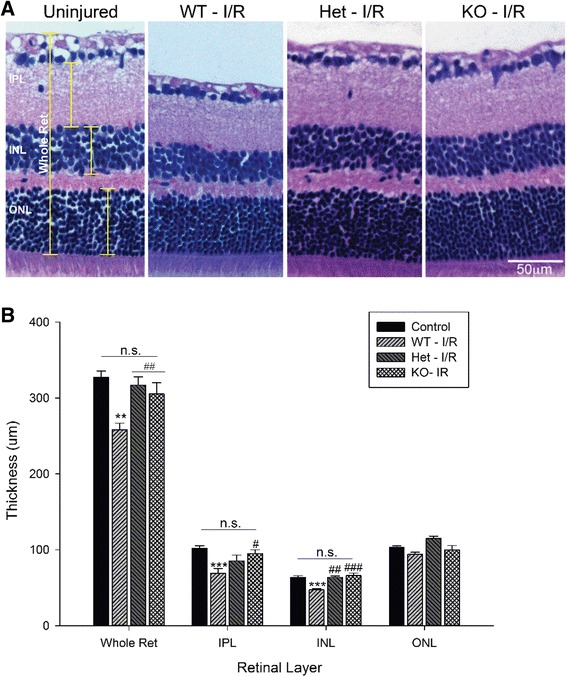Fig. 5.

C1qa-deficiency protects against retinal thinning resulting from ischemic injury. (a) Representative H&E stained retinal cross-section images demonstrating the differences in retinal morphology observed in animals receiving retinal I/R injury compared with an uninjured retina. Retinas from WT mice were observed to have significant thinning of the IPL and INL, as well as dramatic loss of the NFL. However, retinas from C1qa +/− and C1qa −/− showed no visible changes in thickness. (b) Retinal layer thickness analysis of the whole retinal, the inner plexiform layer (IPL), inner nuclear layer (INL), and outer nuclear layer (ONL). A significant difference was determined between control and WT retinas (p < 0.01) in all layers measured except for the ONL. This difference was not observed in C1qa +/− and C1qa −/− retinas. Further, a significant rescue of retinal thickness could be seen between WT, C1qa +/−, and C1qa −/− animals in the whole retina (p < 0.01) and the INL (p < 0.01), and the IPL (p < 0.05) in the C1qa −/− mice. Mean ± SEM, n = 7 per group. **p < 0.01, ***p < 0.001 compared to control and #p < 0.05, ##p < 0.01, ###p < 0.001 compared to WT–I/R determined by One-way ANOVA followed by Holm-Sidak post test. Scale bars = 50μm
